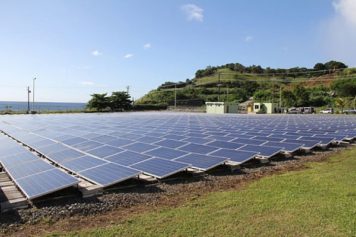If you haven’t heard about Solar Roadways and all the possibilities that the emerging technology comes with, this viral video from the guys behind the initiative is a good place to start. The video had more than 1.3 million views.
There is currently a crowdfunding campaign under way to help pay for the development. The website describes what Solar Roadways can do:
Solar Roadways is a modular paving system of solar panels that can withstand the heaviest of trucks (250,000 pounds). These Solar Road Panels can be installed on roads, parking lots, driveways, sidewalks, bike paths, playgrounds … literally any surface under the sun. They pay for themselves primarily through the generation of electricity, which can power homes and businesses connected via driveways and parking lots. A nationwide system could produce more clean renewable energy than a country uses as a whole (http://solarroadways.com/numbers.shtml).
They have many other features as well, including: heating elements to stay snow/ice free, LEDs to make road lines and signage, and attached Cable Corridor to store and treat stormwater and provide a “home” for power and data cables. EVs will be able to charge with energy from the sun (instead of fossil fuels) from parking lots and driveways, and after a roadway system is in place, mutual induction technology will allow for charging while driving.While the technology will certainly excite climate change activists, the millions of Americans who don’t view climate change as a life-threatening catastrophe in the making may also appreciate the potential economic benefits and overall coolness of Solar Roadways.
Forget climate change — if Solar Roadways can lower energy and fuel costs without costing taxpayers an arm and a leg, why not look at least into it?
As the video above notes, if Solar Roadways ever becomes widely used, it could provide a jolt to the manufacturing sector in the U.S. and potentially create new jobs as well.
The idea has been criticized as unrealistic, and many have argued it would be too expensive to implement nationally.
source: theblaze.com


